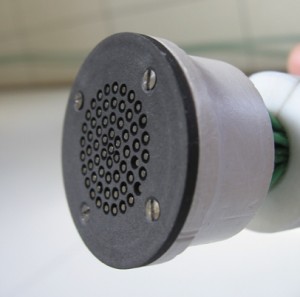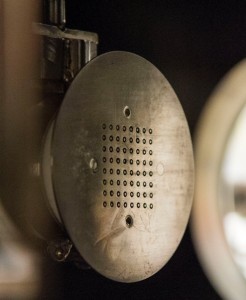Linear plasma devices
Several multi-probe systems were designed and developed in our Plasma Research Center for the electrical diagnosis of linear magnetized plasma devices, such as Pilot-PSI and Magnum-PSI at FOM Institute DIFFER, Dutch Institute for Fundamental Energy Research, Nieuwegein,The Netherlands . These devices were designed to study the interaction of a plasma beam with a solid target, in conditions which are relevant for fusion devices, such as the tokamaks. With the multi-probe systems we are able to obtain spatio-temporal distributions of plasma beam parameters, such as floating potential and ion saturation current, at the target surface. When measuring, the systems replace the target of the device.
Two versions of a multi-probe system, used in Pilot-PSI are shown here. Each system consists of 61 cylindrical probes made of tungsten wires (0.89 mm in diameter), disposed in 4 concentric circles. The radial resolution of the system is 2.5 mm and, thus, the larger circle has the radius of 10 mm. A graphite front plate plays the role of the target and protects the ceramic holder of the probes. The difference between the two systems is the position of the probes with respect to the front plate. In one version the probes are placed behind the holes drilled in the front plate, while in the other version the probes are introduced in the holes of the front plate.
Two versions of the multi-probe system used in Pilot-PSI
The experience gained during probe experiments in Pilot-PSI allowed us to transfer the diagnosis method to Magnum-PSI, using a new multi-probe system. This system consists of 64 probes arranged in a 2D square matrix of 8×8, with linear resolution of 4 mm in each of the two directions. The multi-probe system faces the plasma with a tungsten front plate of 2 mm thickness and 85 mm in diameter.
The multi-probe system used in Magnum-PSI


